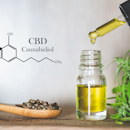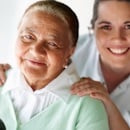
Respiratory Syncytial Virus (RSV): What You Need to Know
Respiratory Syncytial Virus (RSV) is a common respiratory virus that usually causes mild, cold-like symptoms. In most cases, the virus runs its course in 7-14 days; however, this virus may be life-threatening in infants and older adults. RSV is the most common cause of bronchiolitis and pneumonia in children younger than 1 year of age and is a significant cause of respiratory illness in older adults (Centers for Disease Control and Prevention (CDC), 2018).
According to the CDC, almost all children will be infected by RSV by their second birthday (CDC, 2018). Children that are most at risk are:
- Premature infants
- Very young infants (under the age of 6 months)
- Children younger than 2 years of age with chronic lung or heart disease
- Children with suppressed immune systems
- Children with neuromuscular disorders
- Older adults (over 65 years of age)
- Adults with chronic lung or heart disease
- Adults with suppressed immune systems (CDC, 2018b)
RSV is a seasonal event, usually occurring from mid-September to mid-May. The seasonal peak usually occurs from December to February.
Statistically, the average RSV season results in:
- 2.1 million outpatient visits among children younger than 5 years old
- 177,000 hospitalizations among adults older than 65 years
- 14,000 deaths among adults older than 65 years (CDC, 2018a)
Clinical Symptomology
Infants and children with RSV usually present with rhinorrhea, cough, sneezing, fever, and wheezing. Often the only symptom in the very young infant is irritability, decreased activity, and apnea. Most infants and children will need symptom relief at home. However, the younger infant and child may have difficulty clearing their airways, leading to an Emergency Department visit (CDC, 2018b).
Adults usually have mild or no symptoms. Symptoms are usually consistent with an upper respiratory tract infection which can include rhinorrhea, pharyngitis, cough, headache, fatigue, and fever. Symptoms usually last less than five days (CDC, 2018b).
Diagnosis
Because the symptoms of RSV mimic other viral and bacterial infections, confirming RSV through laboratory testing is essential to treatment. The most common tests are:
rRT-PCR: real-time reverse transcriptase-polymerase chain reaction – a more sensitive test than culture and antigen testing
Antigen testing: highly sensitive in children, not sensitive in adults
Prophylaxis
Due to the severity of RSV in the very young with underlying medical conditions, the American Academy of Pediatrics (AAP) recommends that Palivizumab, a monoclonal antibody, be given monthly by injection during the RSV season. This medication may provide beneficial immunoprophylaxis in this population (CDC, 2018; Munoz, Ralston, & Meissner, 2017).
Children over 6 months of age should receive the age-appropriate flu vaccine (Munoz, Ralston, & Meissner, 2017).
Treatment:
Most infants, children, and older adults require no specialized treatment. Symptom management will provide some relief and the illness usually runs its course in 7-14 days.
For those patients requiring hospitalization, frequent nasal suctioning and oxygen is all that is required. However, there are outliers who will require intubation and mechanical ventilation.
The 2014 AAP Clinical Guidelines for Bronchiolitis include the following:
- Albuterol and epinephrine should not be administered
- Nebulized hypertonic saline should not be administered in the Emergency Department, but may be administered after the patient is admitted to the facility
- Corticosteroids should not be administered in any setting
- Supplemental oxygen in patients with saturations over 90% may not be needed
- Continuous pulse oximetry may not be needed
- Chest physiotherapy should not be administered
- Antibacterial medications should not be administered unless there is an underlying bacterial infection
- Fluids should be administered to patients unable to maintain oral hydrations (Ralston, Lieberthal, Meissner, Alverson, Baley, Gadomski ….Hernandez-Cancio, 2014)
Protect the high-risk populations, do not visit when you are sick, wash your hands frequently, do not take these infants, children, and adults to highly populated areas during the cold and flu season. Taking these precautions should help reduce the number of hospital visits and poor outcomes from RSV.
References
Centers for Disease Control and Prevention (CDC). Respiratory Syncytial Virus Infection.
CDC. (2018a). Respiratory syncytial virus infection: trends and surveillance.
CDC. (2018b). Respiratory syncytial virus infection: for healthcare professionals.
Munoz, F.M., Ralston, S.L., and Meissner, H.C. (2017). RSV recommendations unchanged after review of new data.
Ralston, S.L., Lieberthal, A.S., Meissner, H.C., Alverson, B.K., Baley, J.E., Gadomski, A.M. ….Hernandez-Cancio, S. (2014). Clinical Practice Guidelines: The diagnosis, management, and prevention of bronchiolitis.




